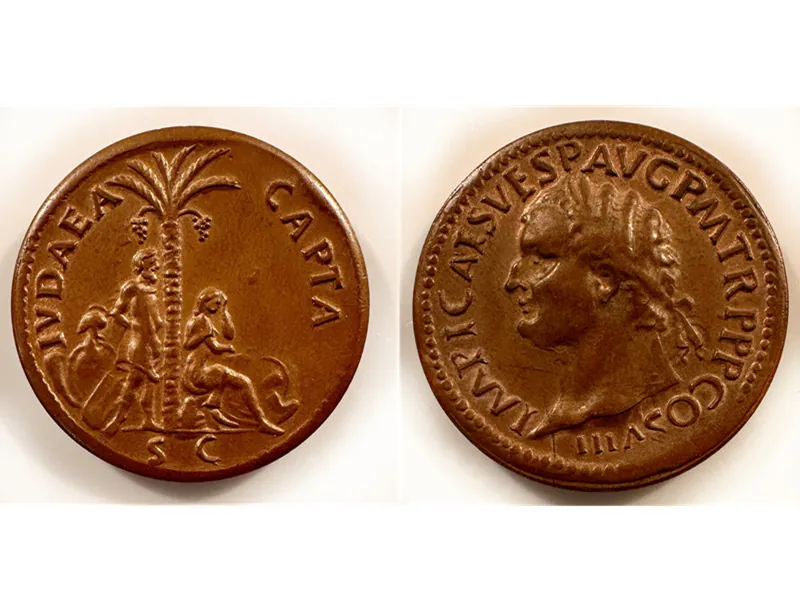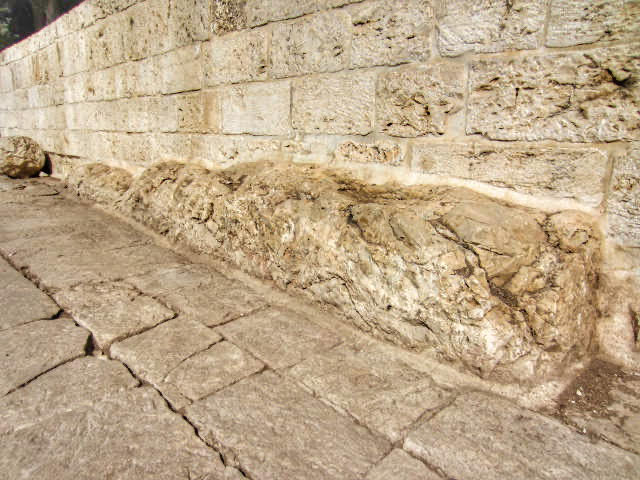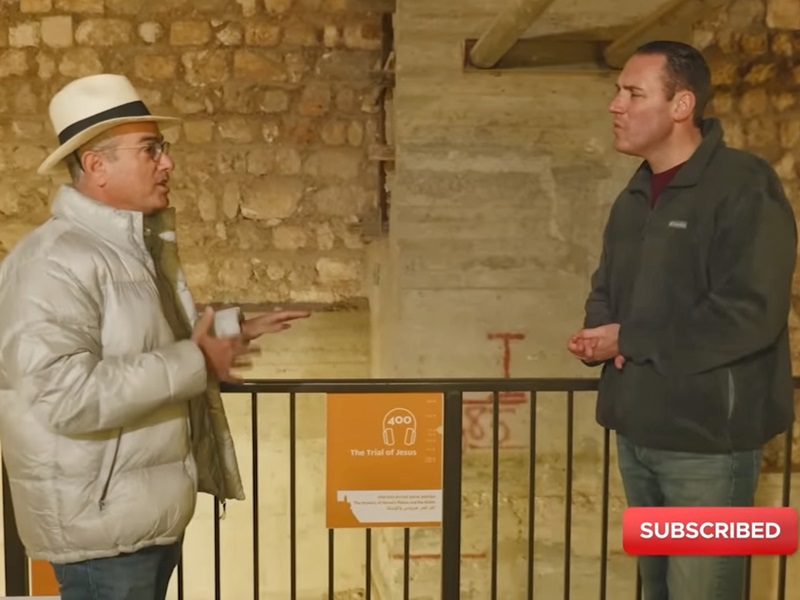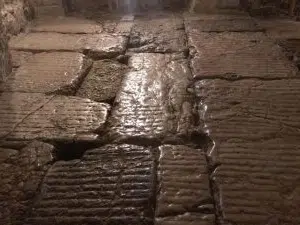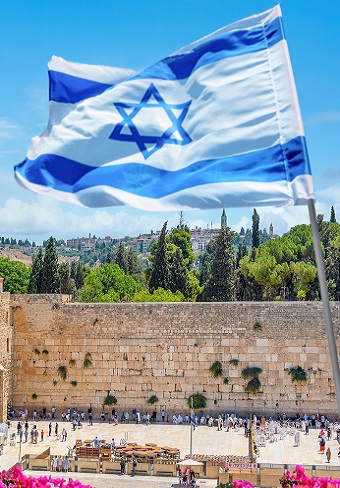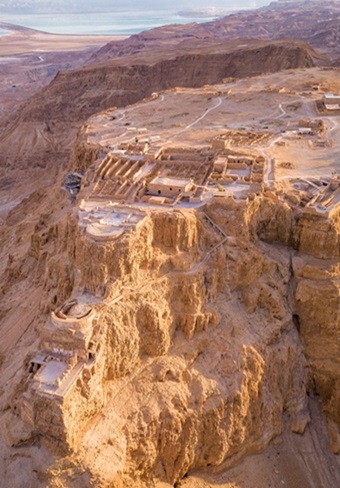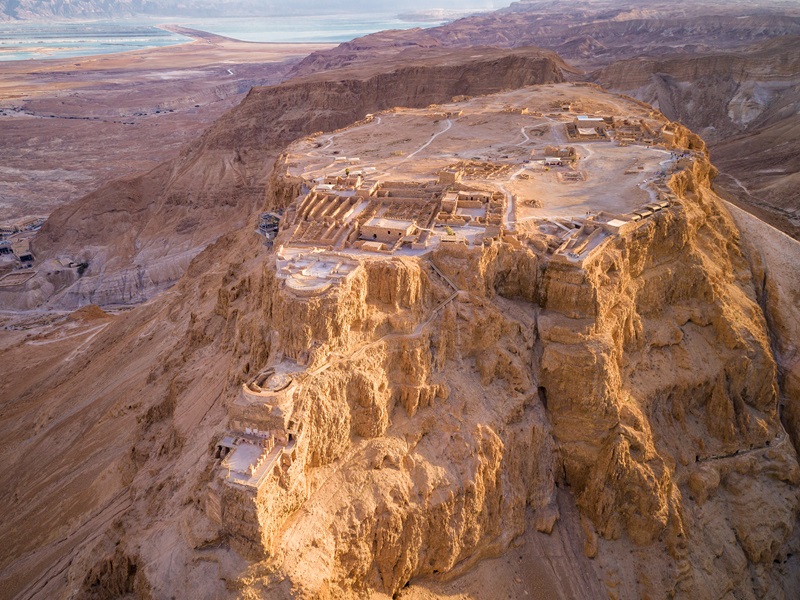Top 10 Archaeological Discoveries in the Holy Land
Being the land of the bible, since the 19th century, many archaeological discoveries have surfaced that relate to the scriptures. Below are our 10 most signifcant archaeological discoveries that relate to the holy scriptures:
1. The Dead Sea Scrolls
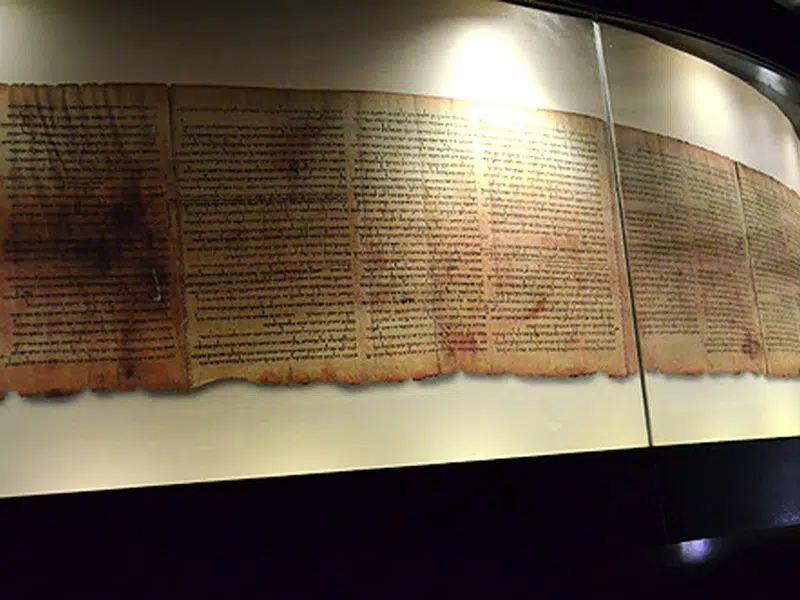 Undoubtedly, the most famous and significant discovery related to the bible are the Dead Sea Scrolls. Unearthed mainly in the 1950s, these hundreds of scrolls were originally part of a library of a Jewish Sect that dwelt at Qumran. Hidden in 11 caves, these scrolls contain copies of almost all the books of the Old Testament. Moreover, they also reflect a community that shared many values like those of the early Christians. Some even suggest that John the Baptist was a member of this sect for a while. Today, most of the scrolls are kept at the Israel Museum, and their samples are displayed at the Shrine of the Book.
Undoubtedly, the most famous and significant discovery related to the bible are the Dead Sea Scrolls. Unearthed mainly in the 1950s, these hundreds of scrolls were originally part of a library of a Jewish Sect that dwelt at Qumran. Hidden in 11 caves, these scrolls contain copies of almost all the books of the Old Testament. Moreover, they also reflect a community that shared many values like those of the early Christians. Some even suggest that John the Baptist was a member of this sect for a while. Today, most of the scrolls are kept at the Israel Museum, and their samples are displayed at the Shrine of the Book.
2. The Priestly Amulet from Ketef Hinnom
 Uncovered in the 1970s, the priestly amulet was unearthed during an excavation of a tomb near Jerusalem’s old city, at Katef Hinnom. One of the tomb’s repositories that was not looted contained precious jewelry and imported glass. But the most significant discovery were two tiny silver amulets containing parts of the Priestly Blessing (Nomber 6). Dating to the 6th century BCE, the Ketef himmon amulets are the oldest copy of any biblical text ever found. They are on display at the Israel Msueum’s archaeological wing, next to the reconstruction of the tomb where they were found.
Uncovered in the 1970s, the priestly amulet was unearthed during an excavation of a tomb near Jerusalem’s old city, at Katef Hinnom. One of the tomb’s repositories that was not looted contained precious jewelry and imported glass. But the most significant discovery were two tiny silver amulets containing parts of the Priestly Blessing (Nomber 6). Dating to the 6th century BCE, the Ketef himmon amulets are the oldest copy of any biblical text ever found. They are on display at the Israel Msueum’s archaeological wing, next to the reconstruction of the tomb where they were found.
3. The Siloam Inscription
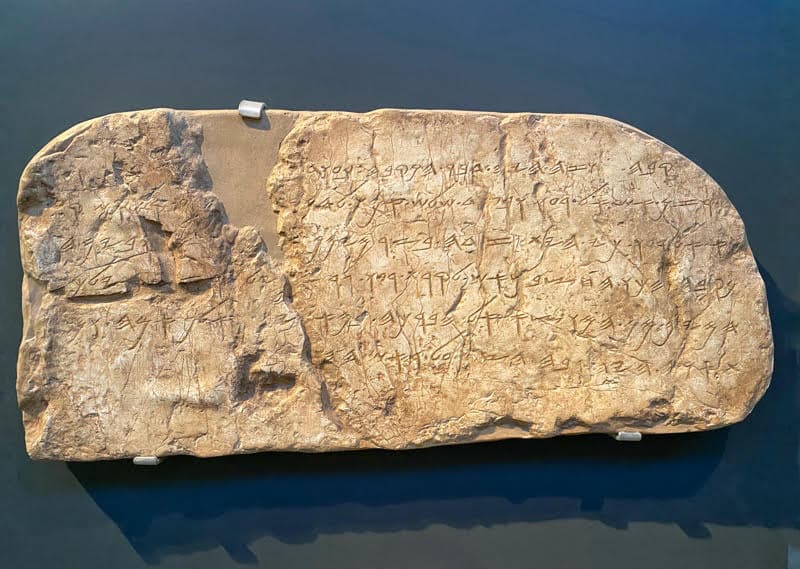 Discovered by chance by a Jewish boy in the late 19th century, the Siloam inscription is a rare find documenting the completion of an underground tunnel that drew the Gihon spring‘s water into the Pool of Siloam. This project ensured a water supply to the city during the Assyrian siege and was on of the reasons the city lasted the attack. The Bible gives minimal reference to this engineering project, and the inscription provides detailed testimony to its completion. Unfortunately, the Ottomans confiscated the find and took it later to Istanbul. Being so, the inscription is on display at the National Archaeological Museum of Turkey. Nevertheless, copies of the inscriptions are on display at the Israel Museum and in the tunnel where the it was originally discovered.
Discovered by chance by a Jewish boy in the late 19th century, the Siloam inscription is a rare find documenting the completion of an underground tunnel that drew the Gihon spring‘s water into the Pool of Siloam. This project ensured a water supply to the city during the Assyrian siege and was on of the reasons the city lasted the attack. The Bible gives minimal reference to this engineering project, and the inscription provides detailed testimony to its completion. Unfortunately, the Ottomans confiscated the find and took it later to Istanbul. Being so, the inscription is on display at the National Archaeological Museum of Turkey. Nevertheless, copies of the inscriptions are on display at the Israel Museum and in the tunnel where the it was originally discovered.
4. The Mesha Stele
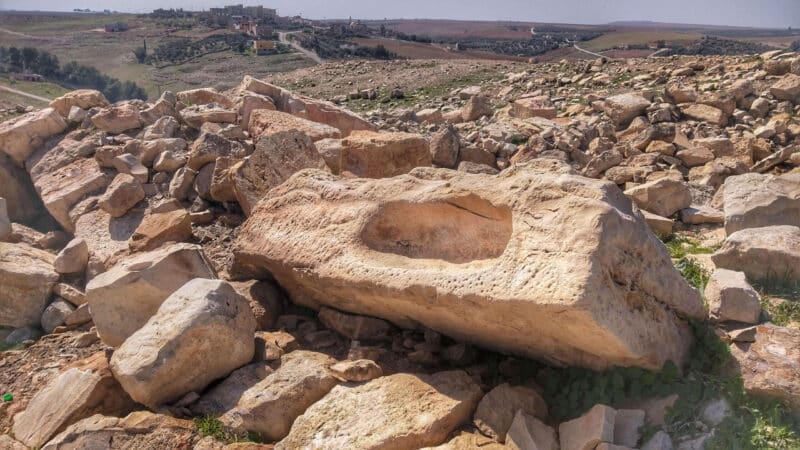 Another discovery made in the 19th century, the Mesha Stele, was a monumental inscription by Mesha, king of Moab. It was placed in Dibon, his capital, after successful military campaigns against the Israelites. It is fascinating to compare his statements with the biblical account (II Kings 3). Unfortunately, the stele was bashed to pieces by Bedouins shortly after its discovery, but a precise imprint of the saved its contents. Today, a copy of the stele is on display at the Israel Museum.
Another discovery made in the 19th century, the Mesha Stele, was a monumental inscription by Mesha, king of Moab. It was placed in Dibon, his capital, after successful military campaigns against the Israelites. It is fascinating to compare his statements with the biblical account (II Kings 3). Unfortunately, the stele was bashed to pieces by Bedouins shortly after its discovery, but a precise imprint of the saved its contents. Today, a copy of the stele is on display at the Israel Museum.
5. The Tel Dan Inscription
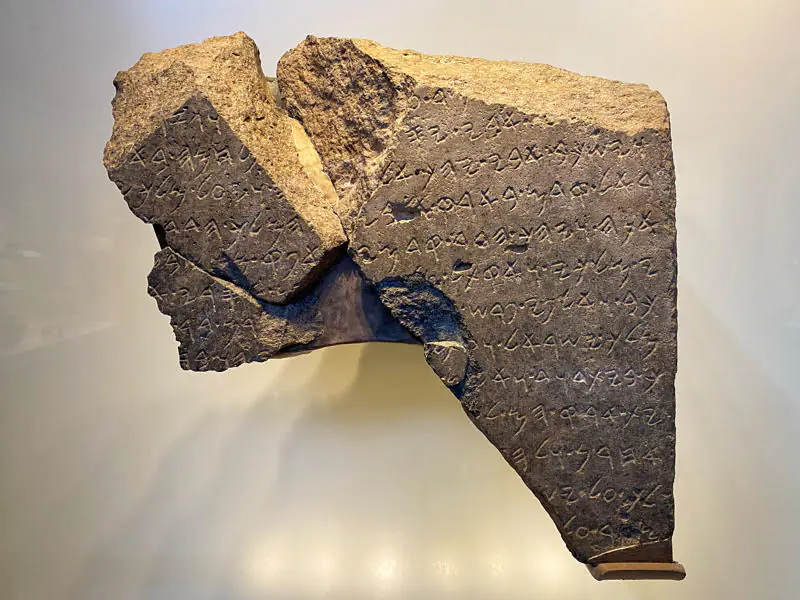 Uncovered in 1993-4 near the Tel Dan‘s main gate, the Tel Dan inscription is a fragment of another stele made in the 9th century BCE by an Aramean King – Haza’el. Boasting on his victory against the Israelites, the stele also mentions the king of Judah as being from the “House of David.” To this day, it is the only time King David is mentioned in any source outside the bible. The inscription is on permanent display at the Israel Museum.
Uncovered in 1993-4 near the Tel Dan‘s main gate, the Tel Dan inscription is a fragment of another stele made in the 9th century BCE by an Aramean King – Haza’el. Boasting on his victory against the Israelites, the stele also mentions the king of Judah as being from the “House of David.” To this day, it is the only time King David is mentioned in any source outside the bible. The inscription is on permanent display at the Israel Museum.
6. Lachish Letters
 In 1932, James Leslie Starkey began excavating at Tel Lachish to uncover the whole site and gain all possible information on the site’s history. His ambitious plan was abruptly stopped when he was murdered by Arabs in 1938. Nevertheless, in his seven years of research, he uncovered a wealth of finds from various periods. His most significant discovery was a set of pottery shards for writing short messages (Ostracae). Known as the “Lachish Letters,” these messages reflect the city’s increasing threat from the advancing Babylonian forces. Perhaps most famous is Lachish’s letter 4, in which a nearby post states that he can no longer see the signals of Azeqah, assumingly because the Babyloniand conquered it shortly before.
In 1932, James Leslie Starkey began excavating at Tel Lachish to uncover the whole site and gain all possible information on the site’s history. His ambitious plan was abruptly stopped when he was murdered by Arabs in 1938. Nevertheless, in his seven years of research, he uncovered a wealth of finds from various periods. His most significant discovery was a set of pottery shards for writing short messages (Ostracae). Known as the “Lachish Letters,” these messages reflect the city’s increasing threat from the advancing Babylonian forces. Perhaps most famous is Lachish’s letter 4, in which a nearby post states that he can no longer see the signals of Azeqah, assumingly because the Babyloniand conquered it shortly before.
7. Kuntilat Ajrud Inscription
Found in a remote biblical site at the edge of the Sinai Peninsula, The Kuntilat Ajrud inscription includes a surprising benediction to the God of the Israelite and “his Ashera.” The inscription suggests the god of the Jews was sometimes worshipped with a female goddess, Ashera. The worship of the Ashera is repeatedly denounced by the biblical prophets Isaiah and Jeremiah. This archaeological discovery enhances the understanding of how rooted the worship of Asherah was. Some scholars believe that hundreds of clay pillared figurines found in archaeological sites are physical representations of this female goddess.
8. The Madaba Map
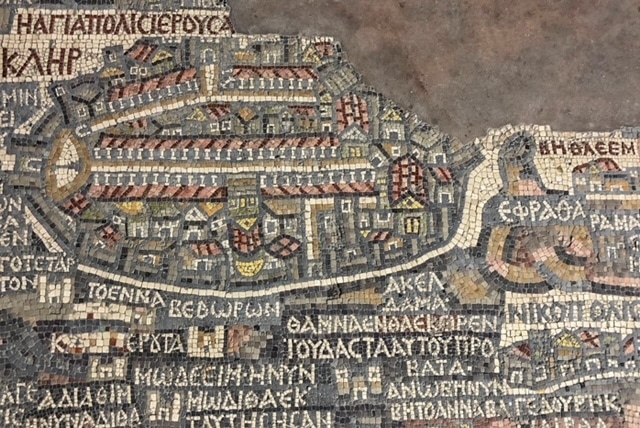 Uncovered in 1897, the Madaba Map is a mosaic floor that provides an amazingly detailed cartographic account of the Holy Land in late antiquity. Dating to the 6th and 7th Centuries CE, the Map presents hundreds of sites and inscriptions, highlighting the Holy sites of the Christian world at the time. To this day the Madaba Map are on display at the site where it was discovered, and is one of Jordan’s most popular tour attractions.
Uncovered in 1897, the Madaba Map is a mosaic floor that provides an amazingly detailed cartographic account of the Holy Land in late antiquity. Dating to the 6th and 7th Centuries CE, the Map presents hundreds of sites and inscriptions, highlighting the Holy sites of the Christian world at the time. To this day the Madaba Map are on display at the site where it was discovered, and is one of Jordan’s most popular tour attractions.
9. Ekron Inscription
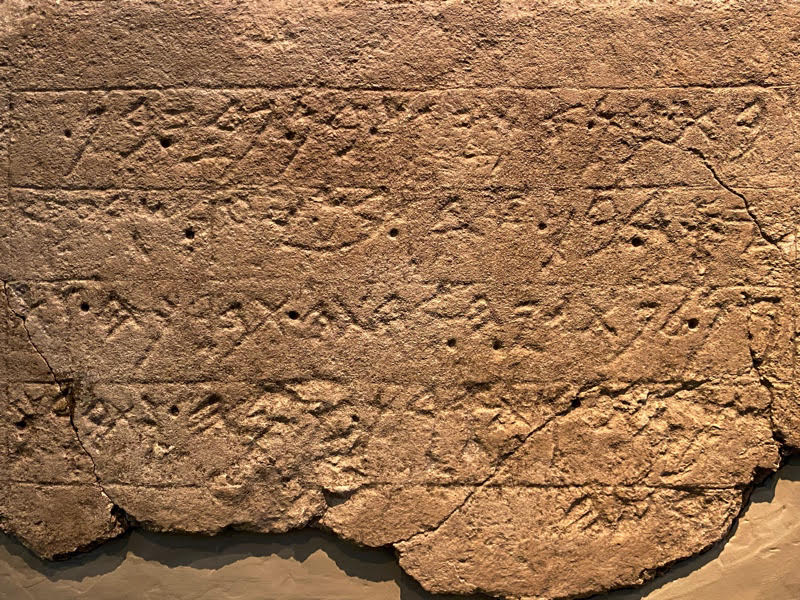 Often missed by visitors to the Israel museum, the Ekron inscription was found in the 1990s in the foundations of a Philistine temple at biblical Ekron. Honoring the goddess Petagaia and the city’s king, Achish, the Ekron inscription is significant in many ways. It provided final proof for the location of biblical Ekron and indicated the Philistines worshipped a chief goddess. Moreover, it demonstrated how by the 7th century BCE, the Philistines converted to the Hebrew language. Lacking an independent historical source, little is known about the Philistines outside the bible. The Ekron Inscription is a significant contributor to the knowledge of Philistine’s history, religion, language, and more.
Often missed by visitors to the Israel museum, the Ekron inscription was found in the 1990s in the foundations of a Philistine temple at biblical Ekron. Honoring the goddess Petagaia and the city’s king, Achish, the Ekron inscription is significant in many ways. It provided final proof for the location of biblical Ekron and indicated the Philistines worshipped a chief goddess. Moreover, it demonstrated how by the 7th century BCE, the Philistines converted to the Hebrew language. Lacking an independent historical source, little is known about the Philistines outside the bible. The Ekron Inscription is a significant contributor to the knowledge of Philistine’s history, religion, language, and more.
10. Caiaphas Ossuary
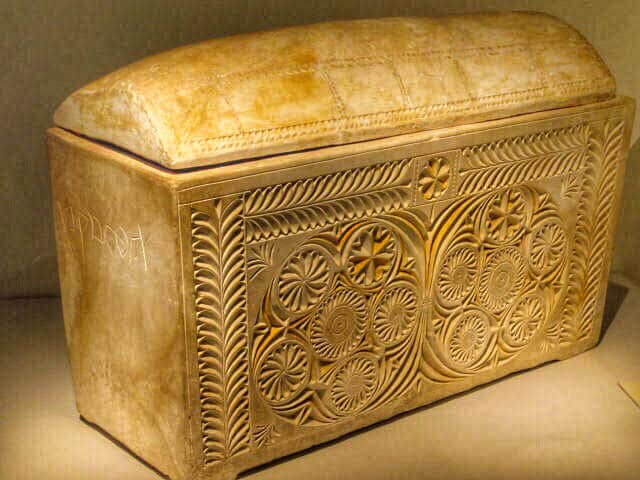 Found by chance while during development work in Jerusalem, the Caiaphas bone box (ossuary) was the first time a burial of a Jewish high priest was ever discovered. Furthermore, Caiaphas is also known from the New Testament as the high priest who interrogated Jesus and his claims of being the Messiah. On permanent display in the archaeological wing of the Israel Museum, the Caiaphas ossuary is one of the most significant archaeological discoveries relating to Jesus’s historicity.
Found by chance while during development work in Jerusalem, the Caiaphas bone box (ossuary) was the first time a burial of a Jewish high priest was ever discovered. Furthermore, Caiaphas is also known from the New Testament as the high priest who interrogated Jesus and his claims of being the Messiah. On permanent display in the archaeological wing of the Israel Museum, the Caiaphas ossuary is one of the most significant archaeological discoveries relating to Jesus’s historicity.
